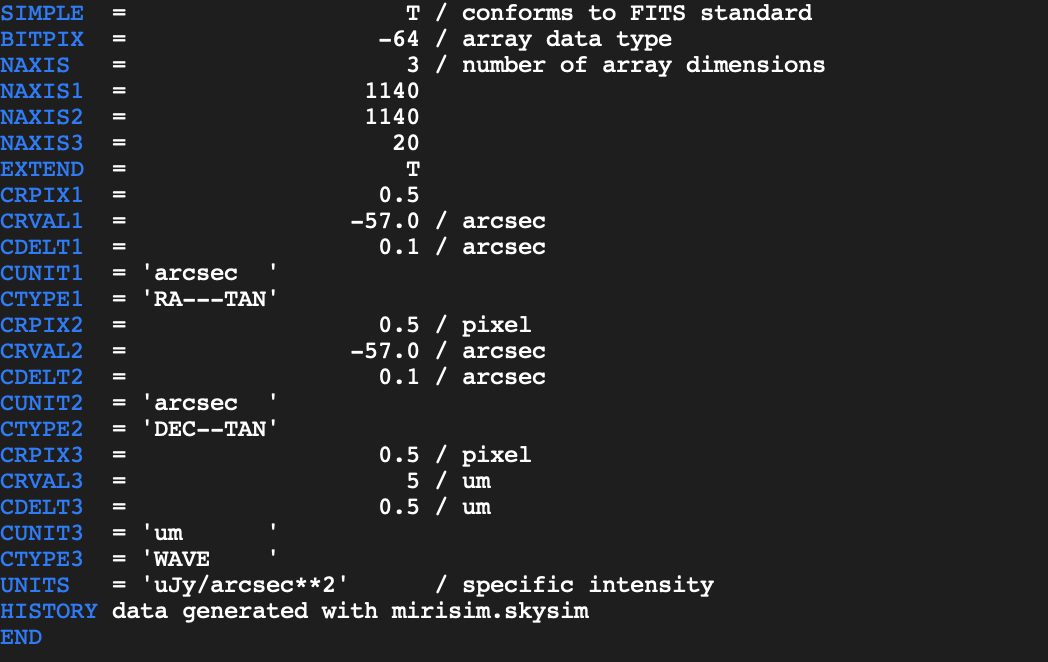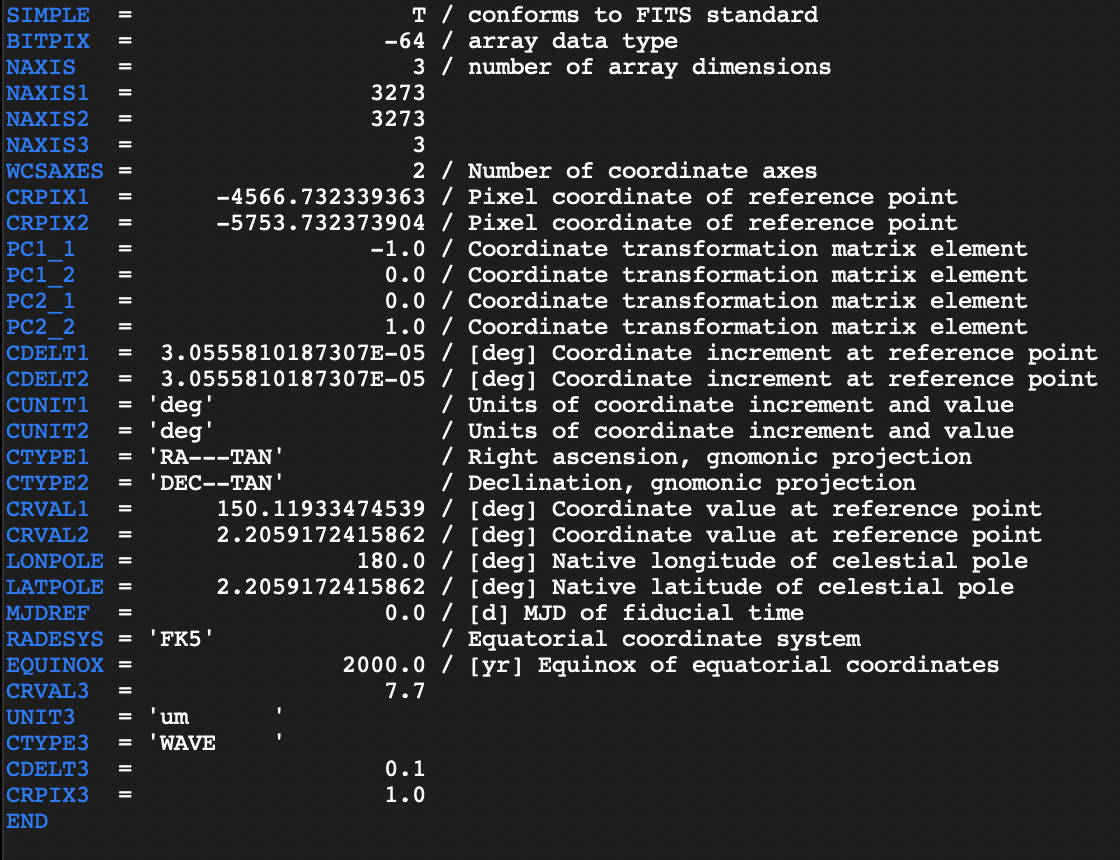Nicole Drakos
Research Blog
Welcome to my Research Blog.
This is mostly meant to document what I am working on for myself, and to communicate with my colleagues. It is likely filled with errors!
This project is maintained by ndrakos
MIRISim Troubleshooting Part IV
In this post I’m going to troubleshoot why my MIRI simulations don’t have any visible sources.
This is a continuation of Part I, Part II, and Part III.
Test 4
For Test 4, I will read in a FITS file with just 1 test galaxy, where I make the fits file using the MIRISim capabilities.
The Source
Here is my code for making a FITS file. The example galaxy is the same, bright, large, galaxy used in Troubleshooting I.
from mirisim.config_parser import SceneConfig, SimConfig
from mirisim.skysim import Background, Point, Galaxy, Skycube
from mirisim.skysim import sed
galaxy = Galaxy(Cen = (0,0),n=1.,re=5.,q=0.4,pa=0)
PL = sed.PLSed(alpha = 0, flux = 1e7, wref = 10.) #reference flux [microJy] at wavelength [microns]
galaxy.set_SED(PL)
scene = galaxy
FOV = np.array([[-57.,57.],[-57.,57.]]) # field of view [xmin,xmax],[ymin,ymax] (in arcsec)
SpatialSampling = 0.1 # spatial sampling (in arcsec)
WavelengthRange = [5,15] # wavelength range to process (in microns)
WavelengthSampling = 0.5 # channel width (in microns)
scene.writecube(cubefits = 'scene.fits',
FOV = FOV, time = 0.0,
spatsampling = SpatialSampling,
wrange = WavelengthRange,
wsampling = WavelengthSampling,
overwrite = True)
Here is what the source looks like:

Notes:
- The image is centred in the middle of the image, as expected
- The image is tilted. I’m not sure why it isn’t a square in -57 to 57? This doesn’t seem to effect how it is read into MIRISim though, so I’m not worried.
Here is the header:

MIRISim Results
Here is the first dither/observation:

Notes:
- This is located in the same place as in Test 2, as expected. However, the galaxy is rotated. I’m not worried about this for now, since the orientation in the source FITS file and the simulated data match
- Overall, this looks about what I would expect, and gives a good baseline to compare what I’ve been working on!
Comparison of test galaxy to my DREaM files
Here is the header for the DREaM file:

One thing to do is check that I am specifying the UNITS for the DREaM header. Other than that, nothing obvious pops out at me.
Next Steps
There are two things I want to pursue next:
- Fix the DREaM fits files
- Specify units properly
- Check visually a cutout from the fits file versus some of the cutouts from the Mirage simulations
- Use the test galaxy to really understand the pointings/whether I’m setting the WCS right
- Run this example through the full MIRISim code, check the WCS of the final images.